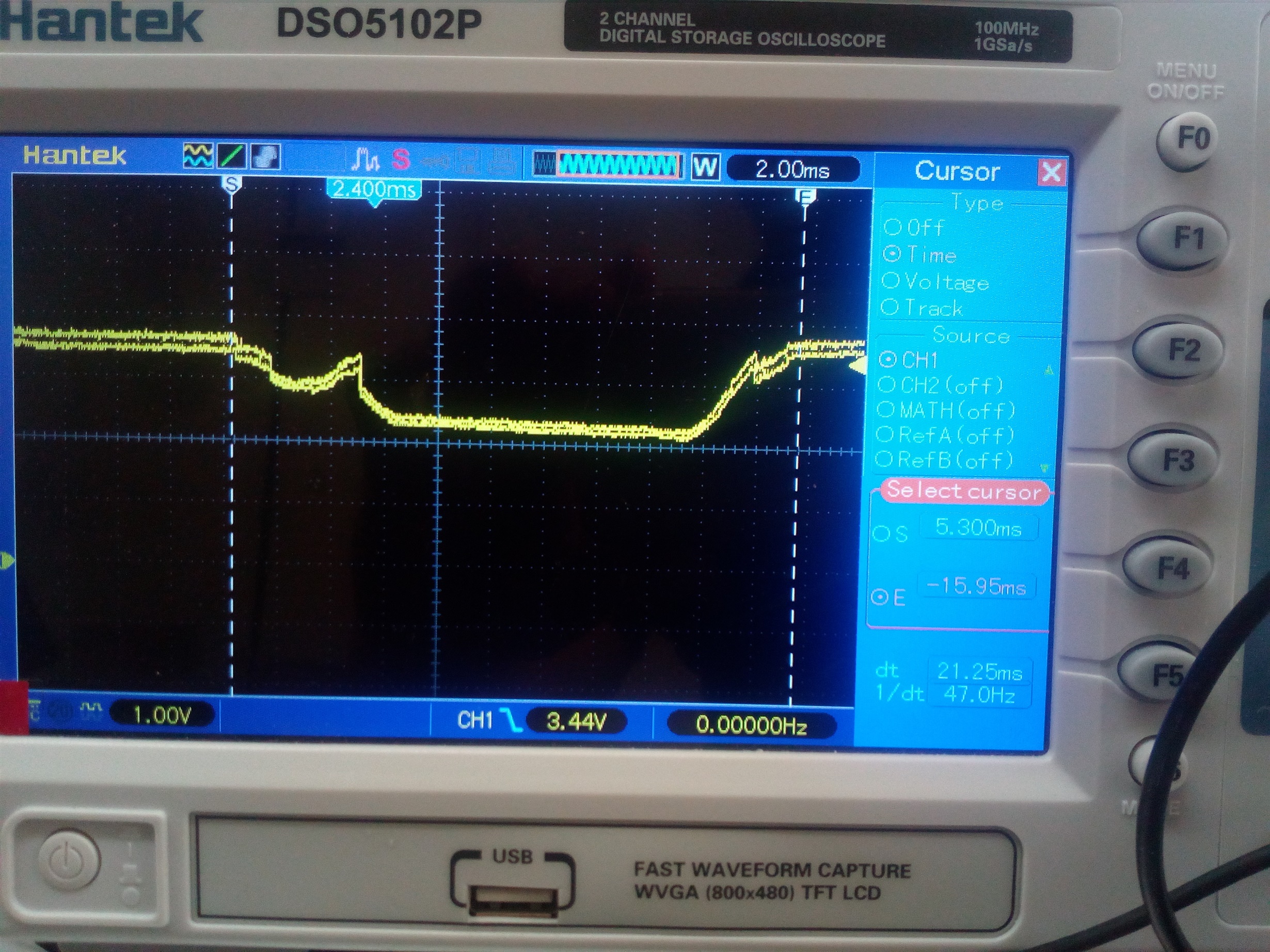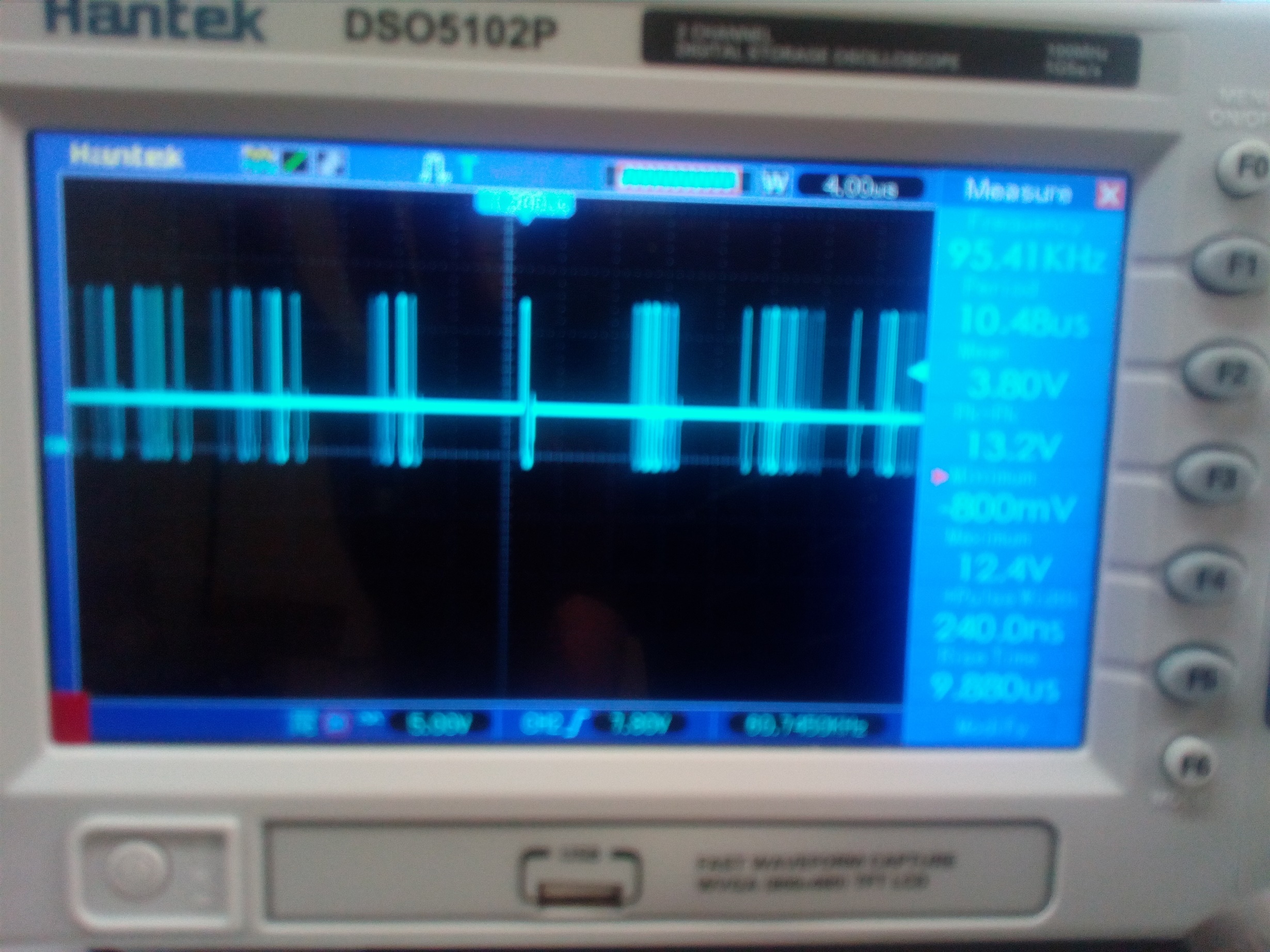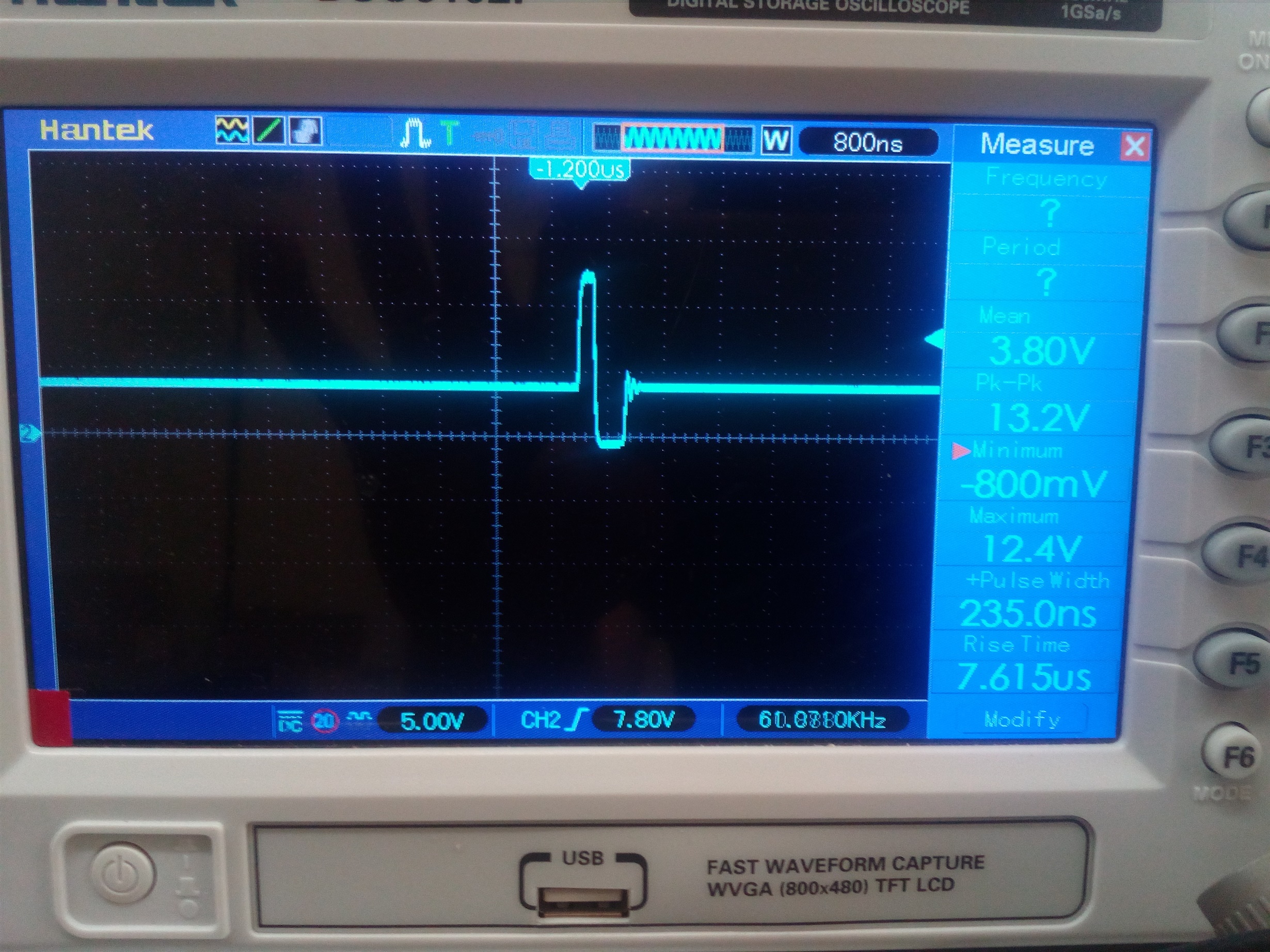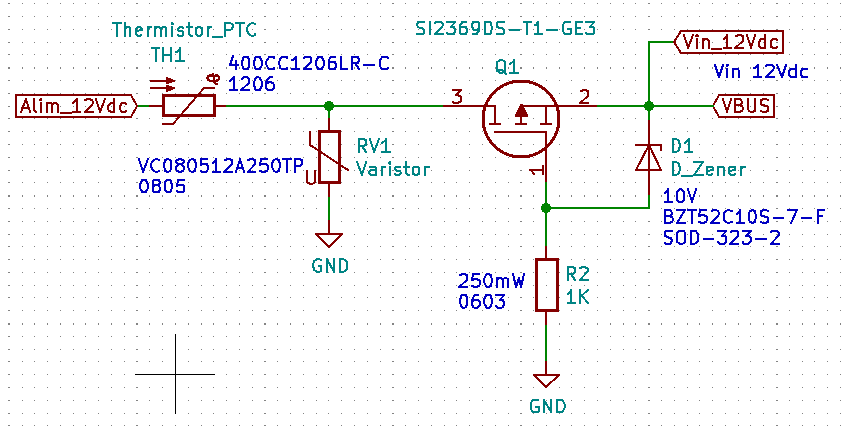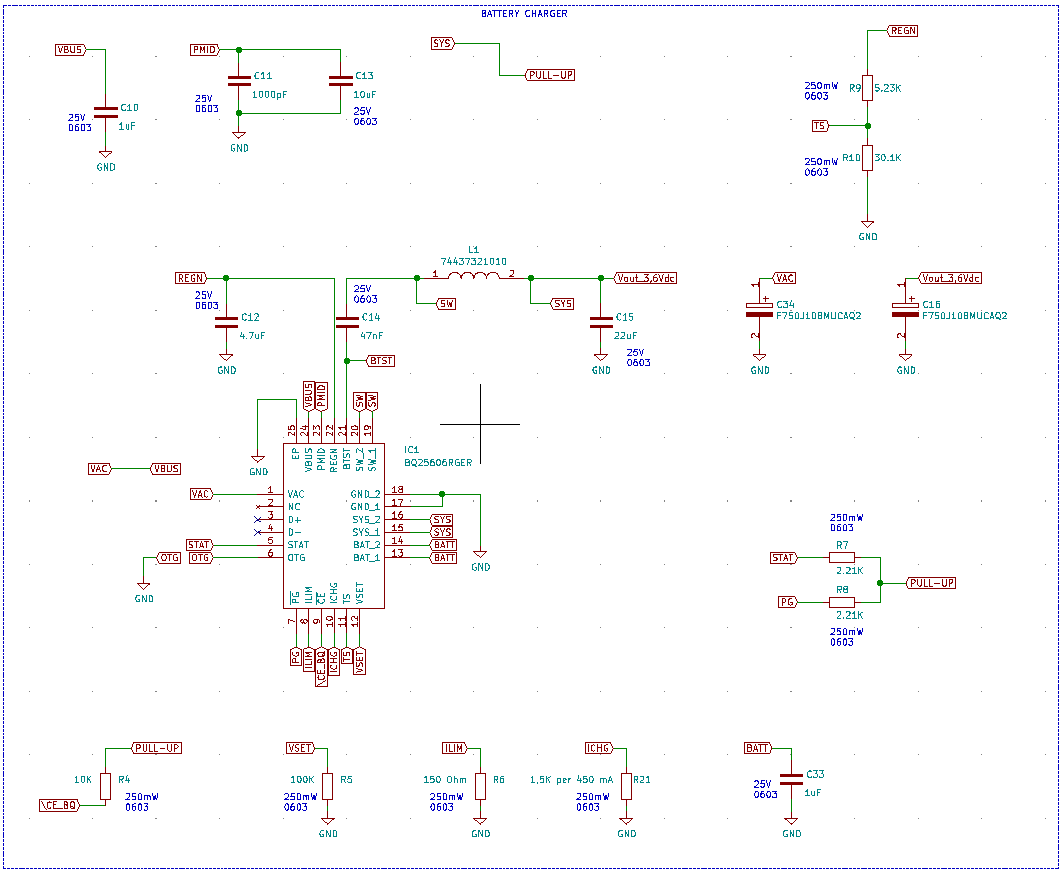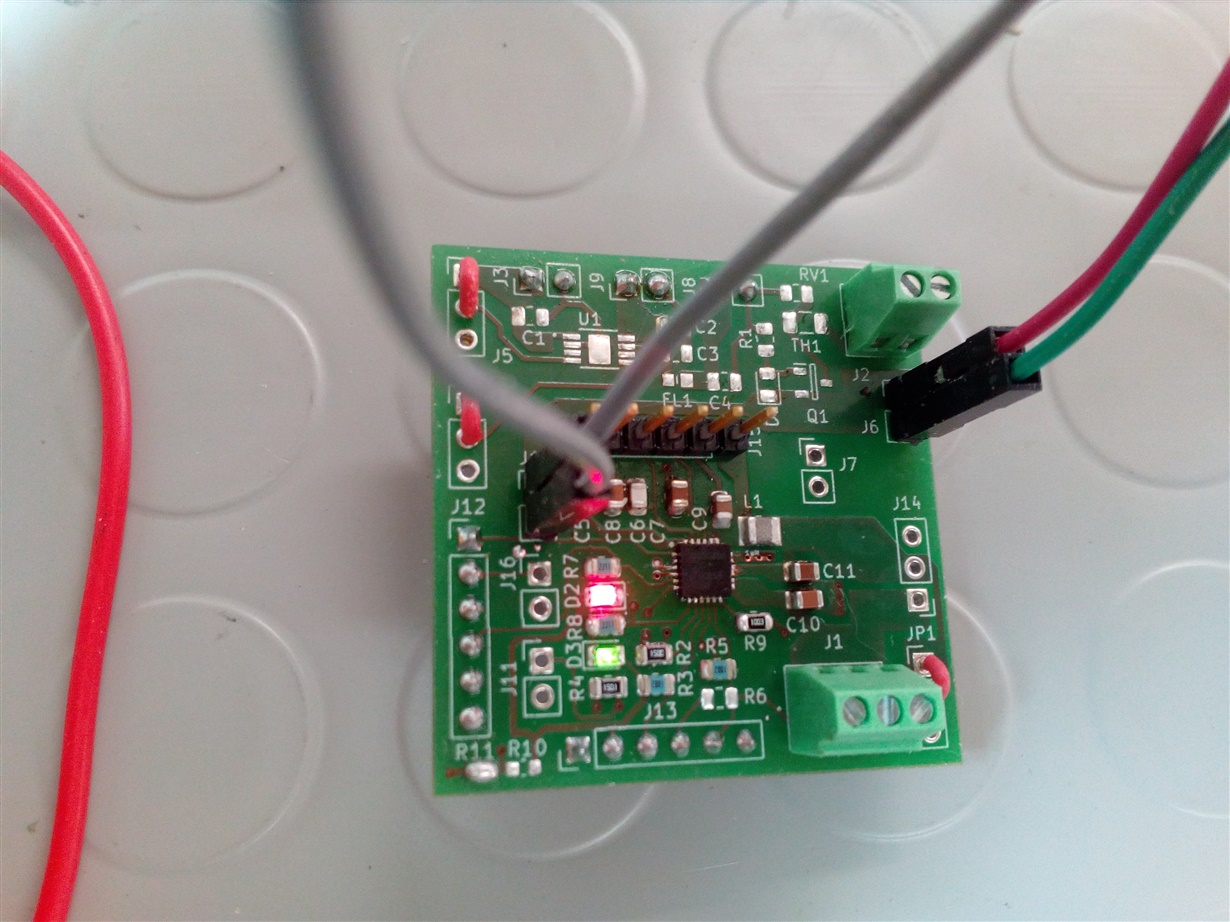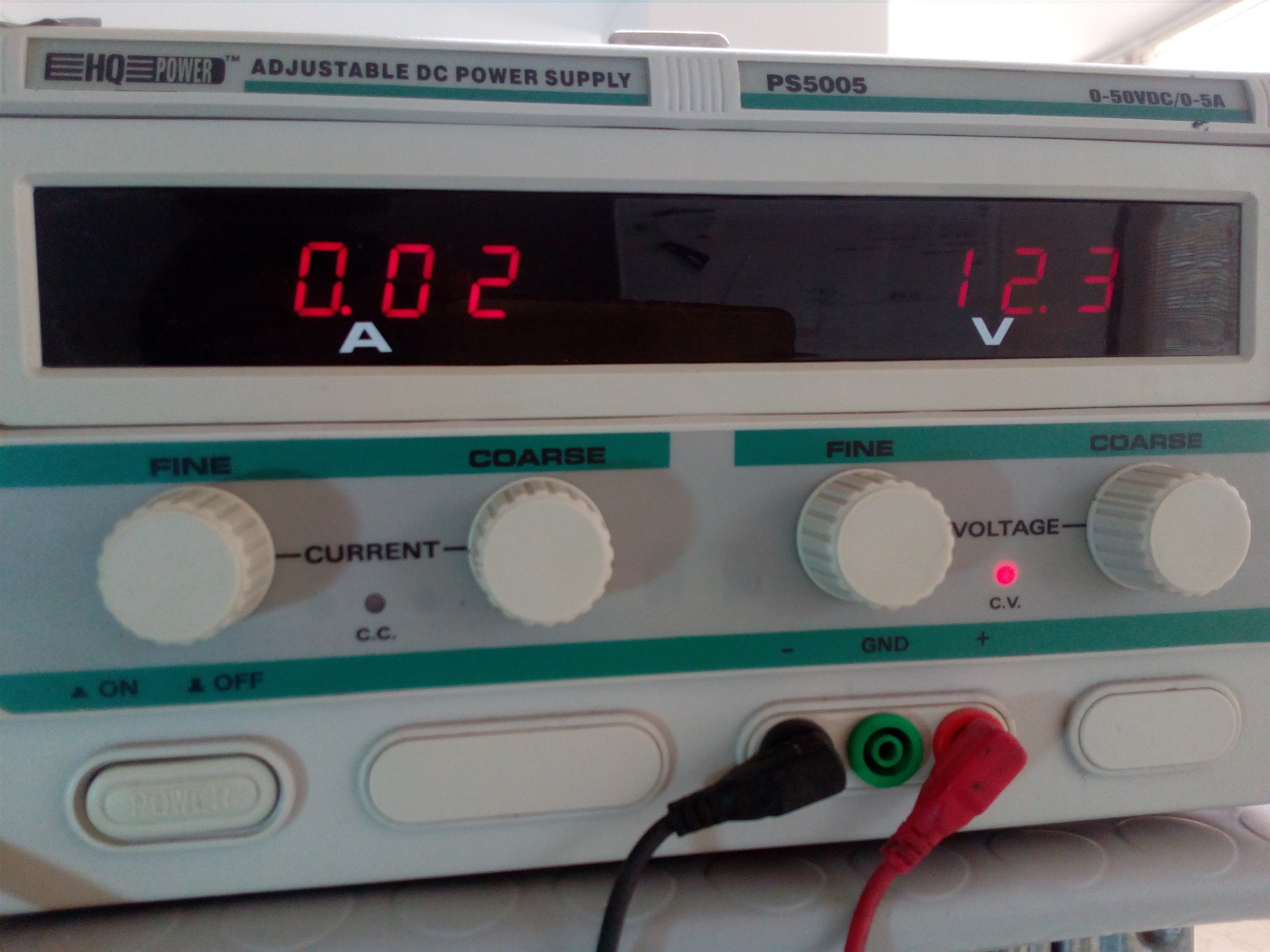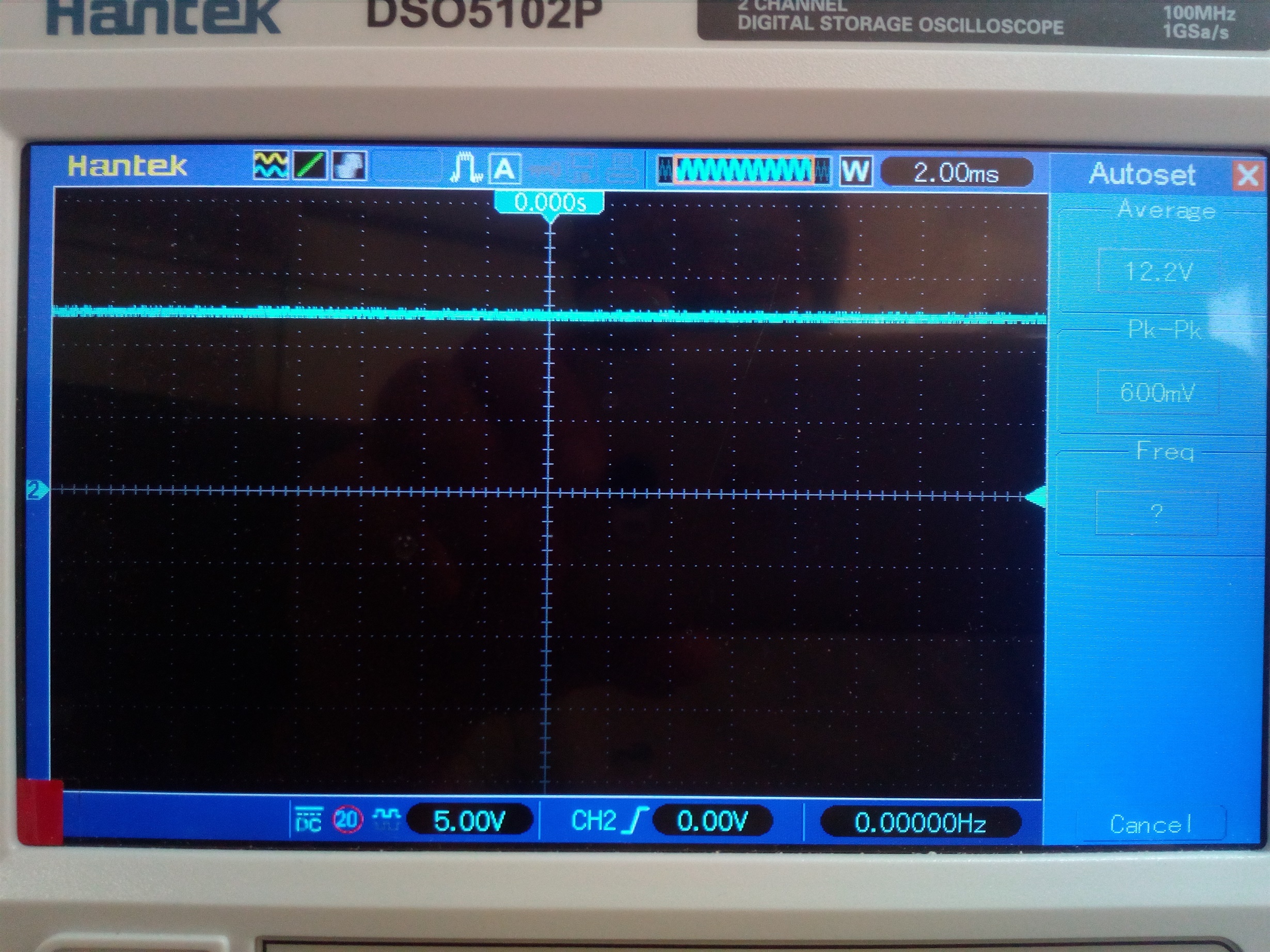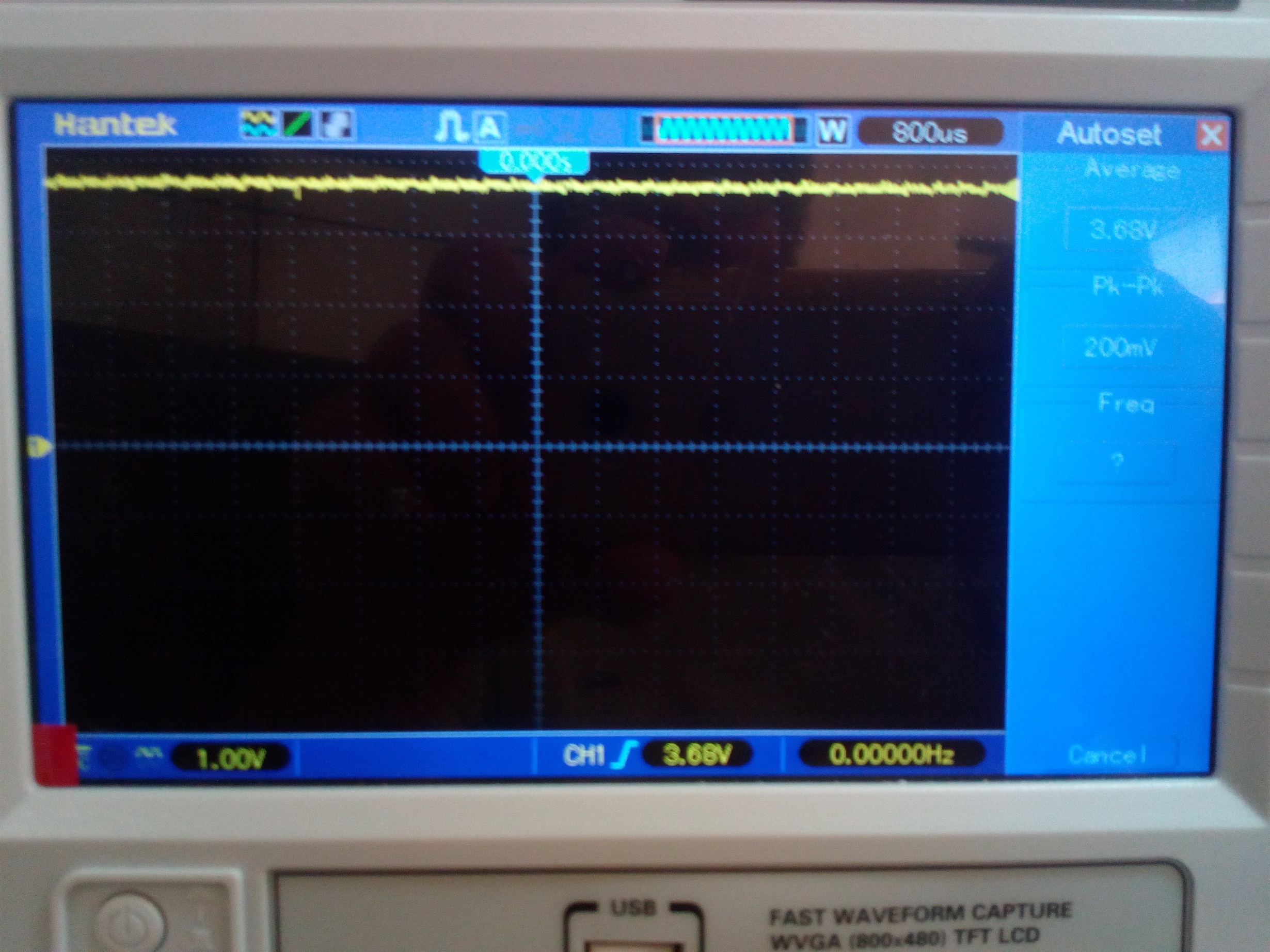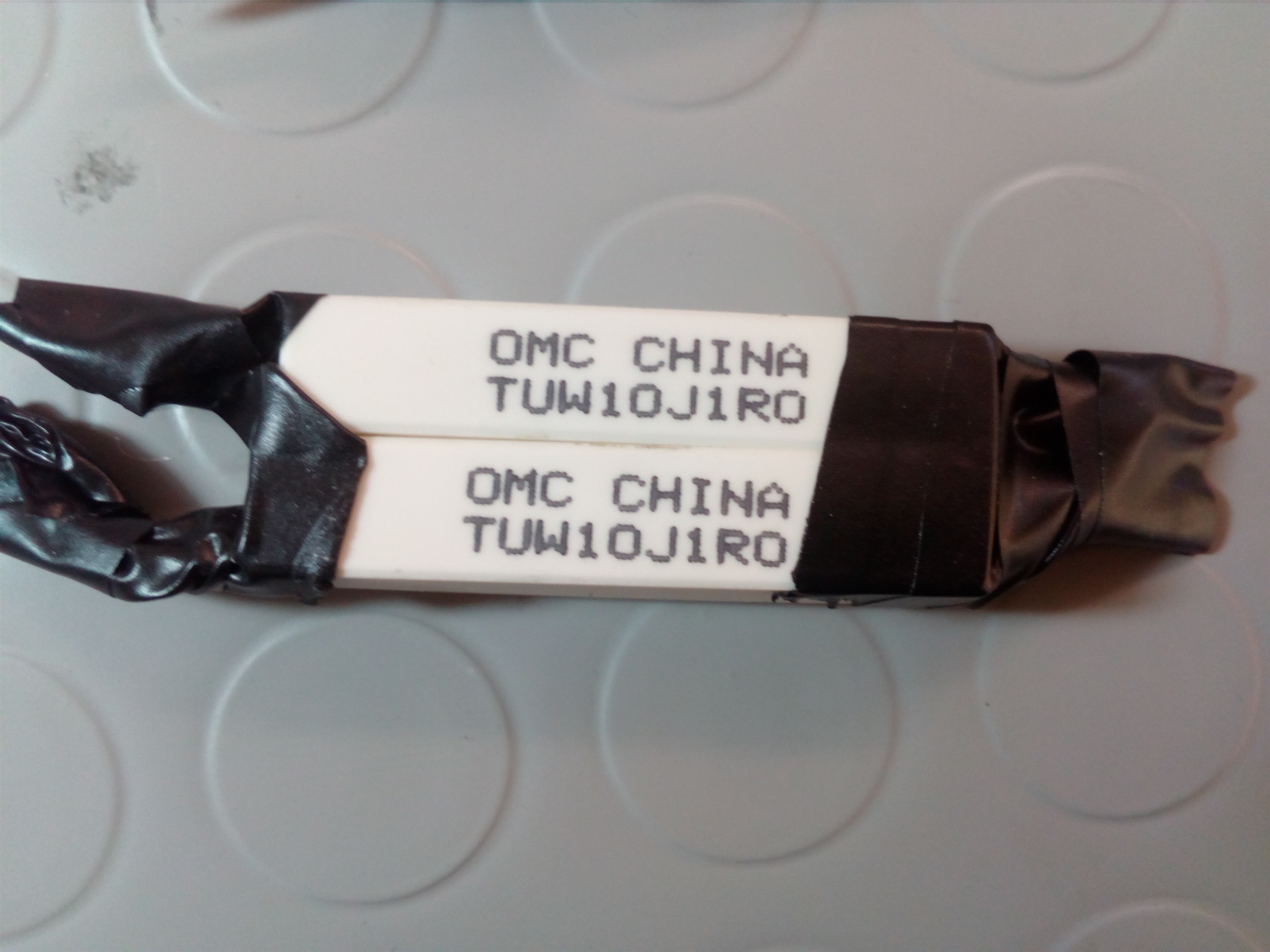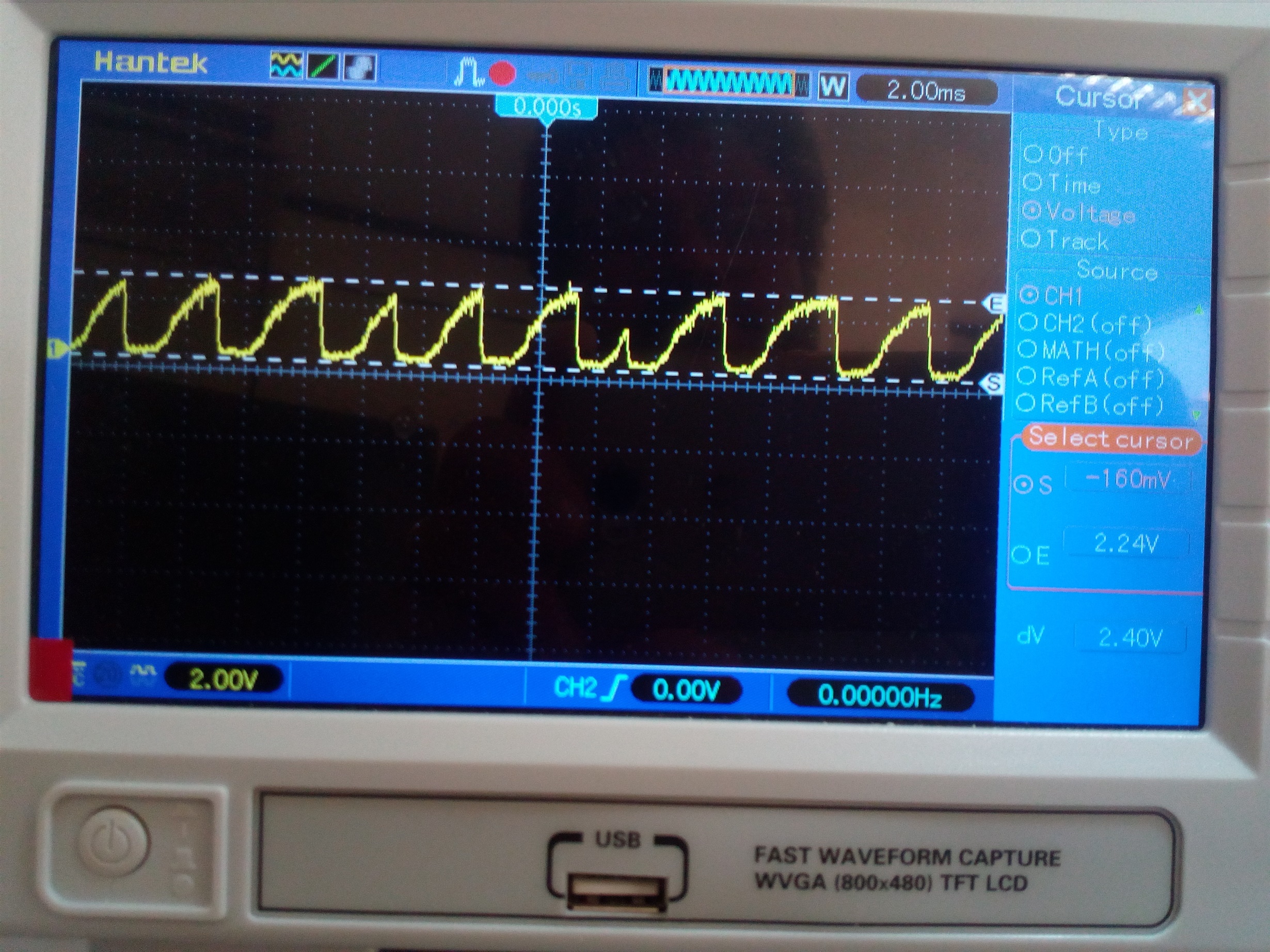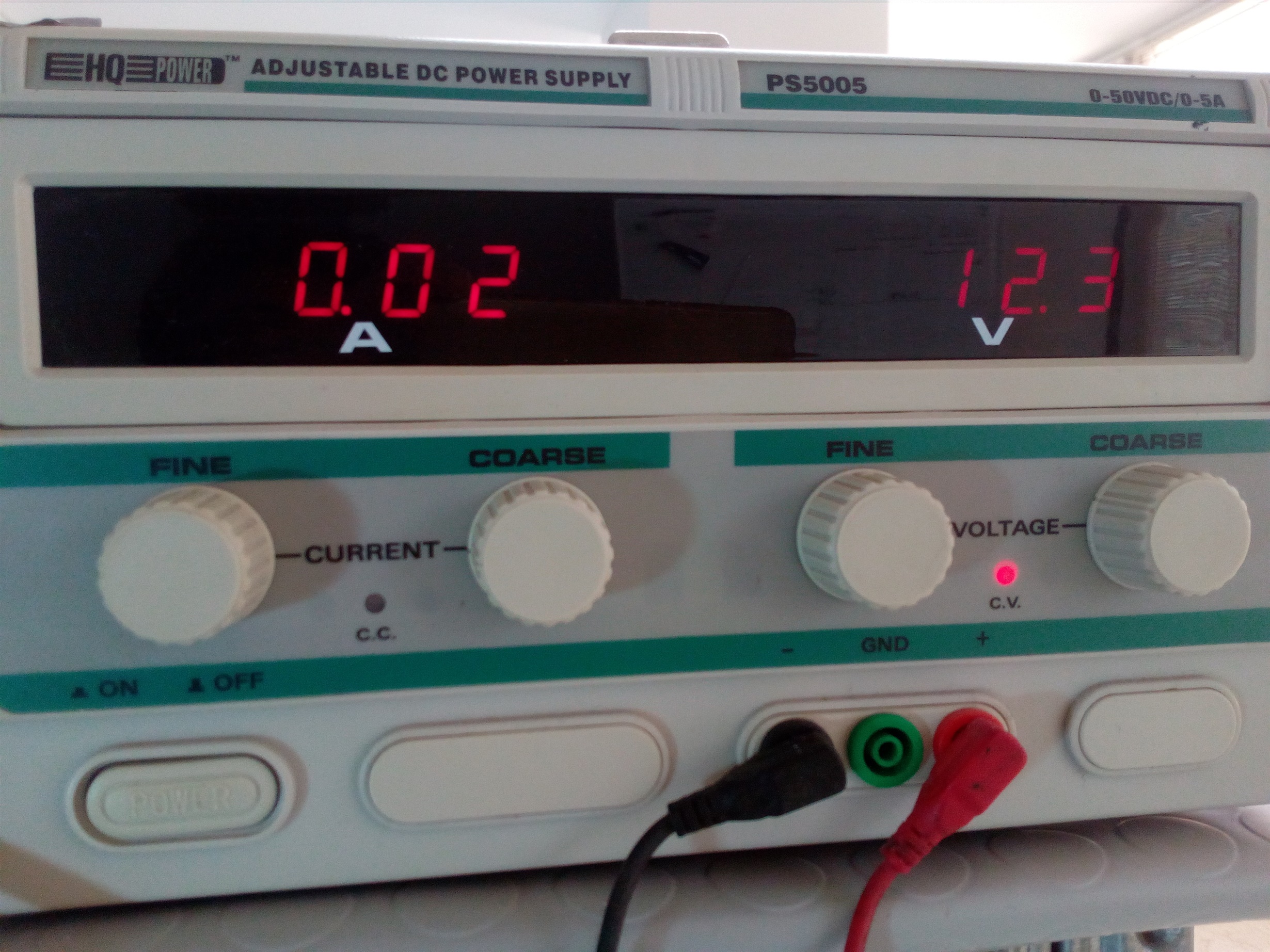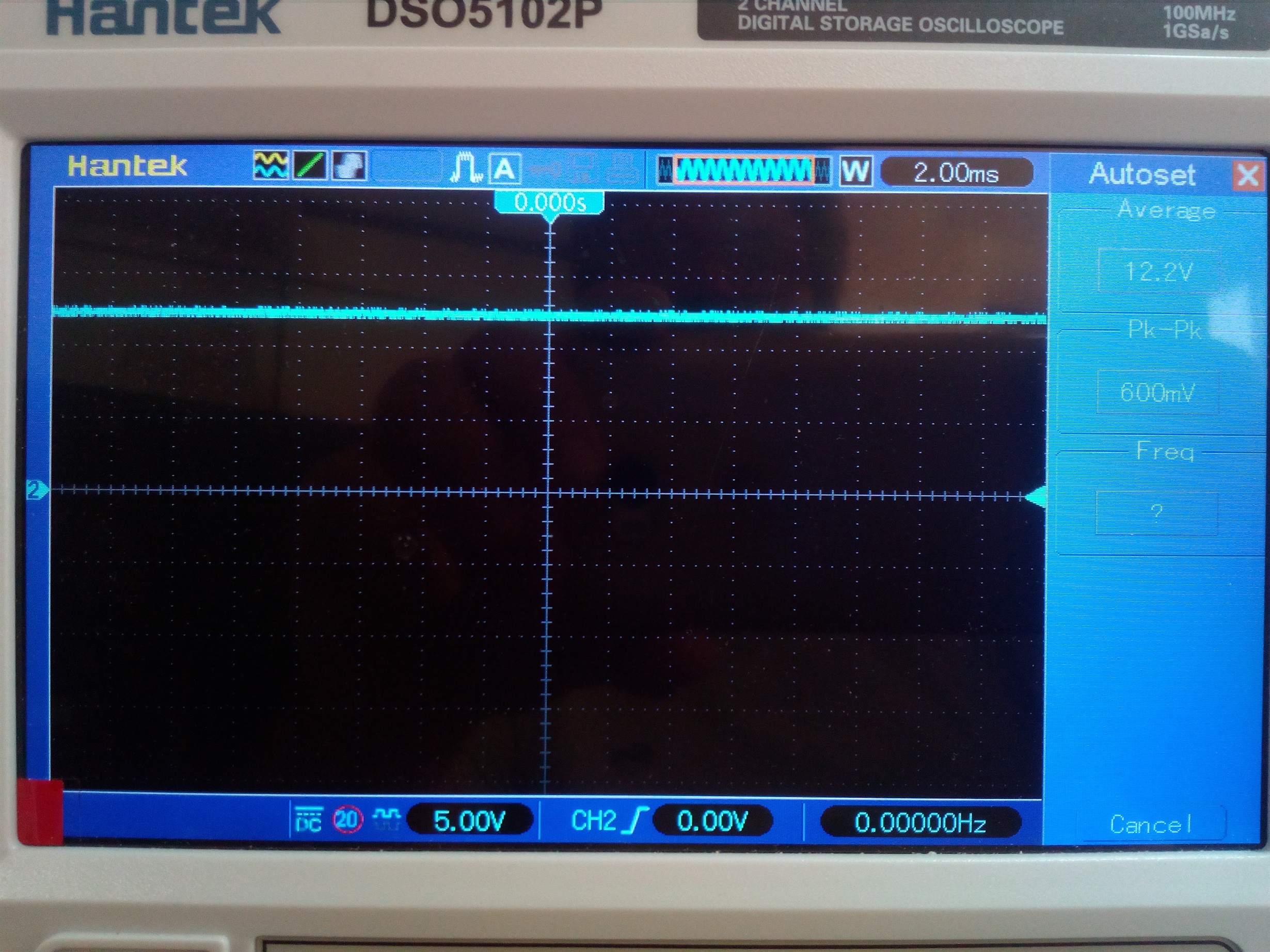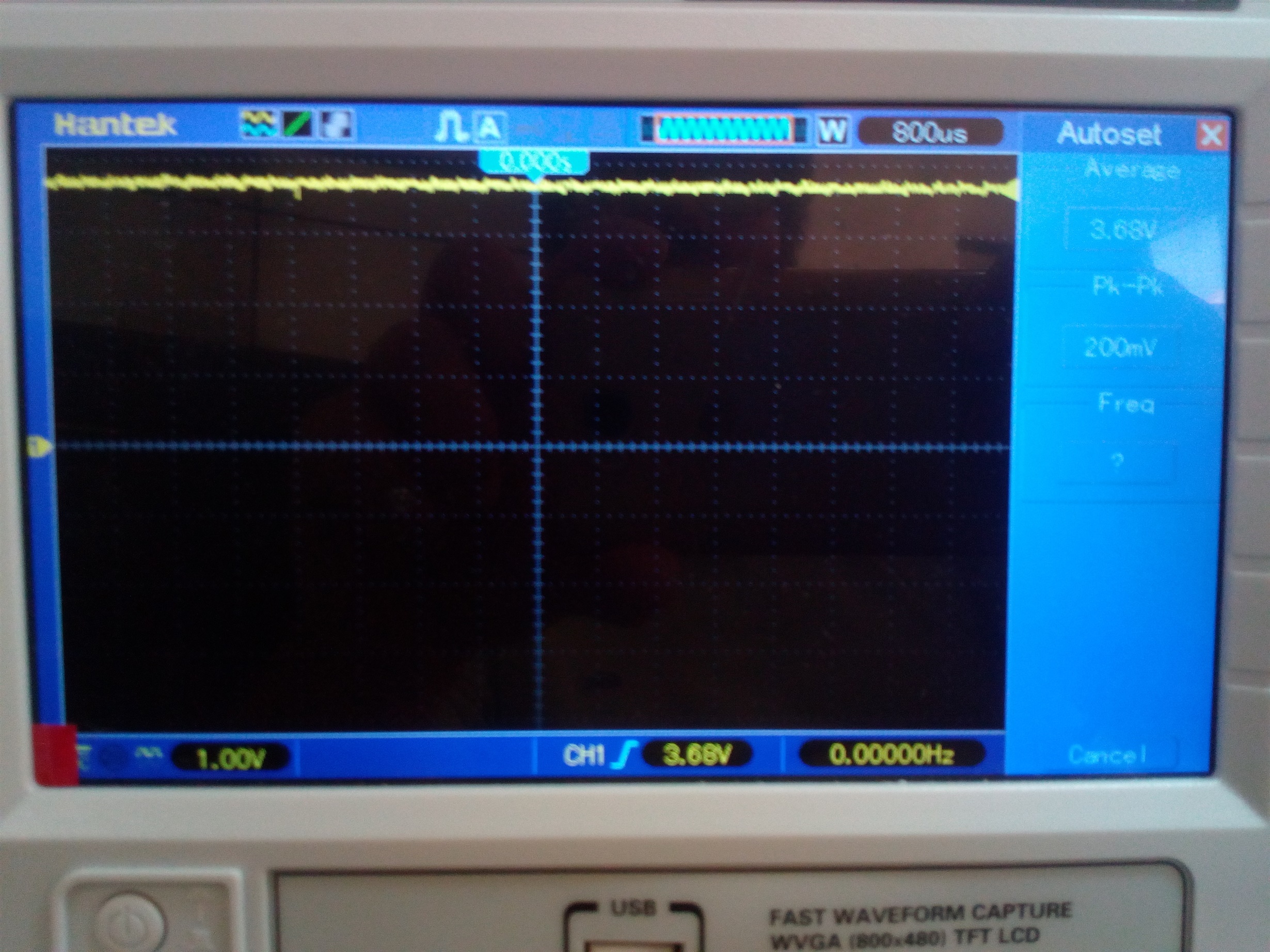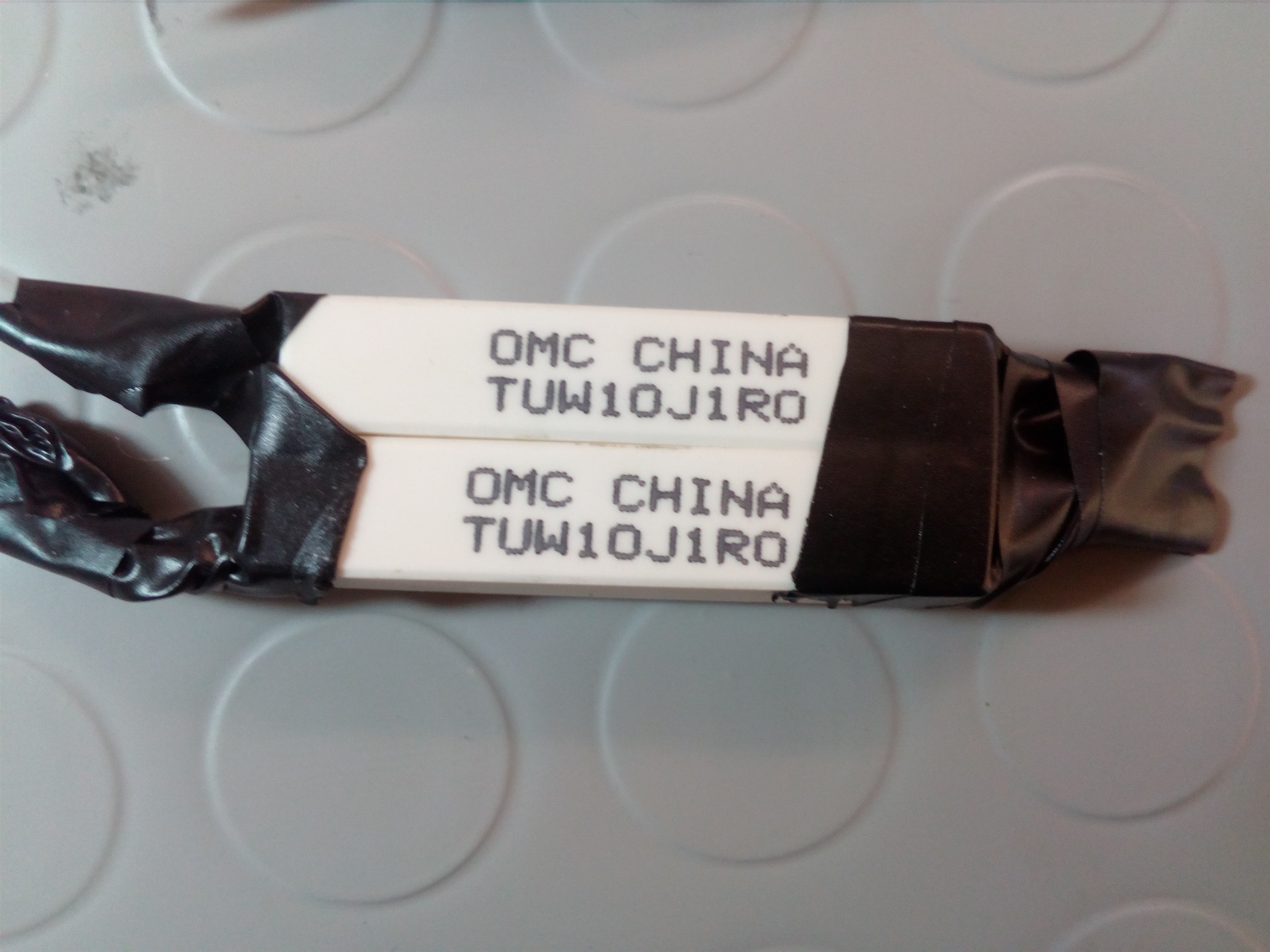Hello,
I chose this device to power a microprocessor that works at 3.6Vdc (with average currents of 600mA (at 3.6Vdc) with peaks of 2A.
My intent is to use it both with and without lithium battery connected, but, if the battery is disconnected, I detect at Vsys a voltage drop of about 1.38V, for the duration of about 20 msec, which resets the microprocessor.
I attach the schematic and photos of the tests done on the Vsys.
From the datasheet, the bq25606 should be able to deliver up to 3 A even in the absence of a battery.
Also, if I measure the SW, I don't see a square wave as per the datasheet.
I'd like to understand where I'm wrong.
Thanks for your help



